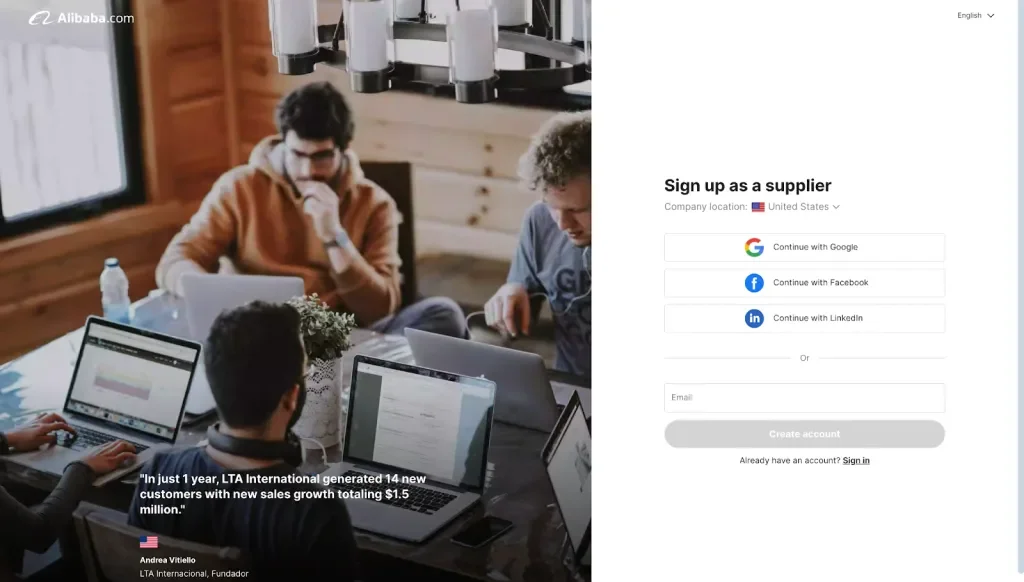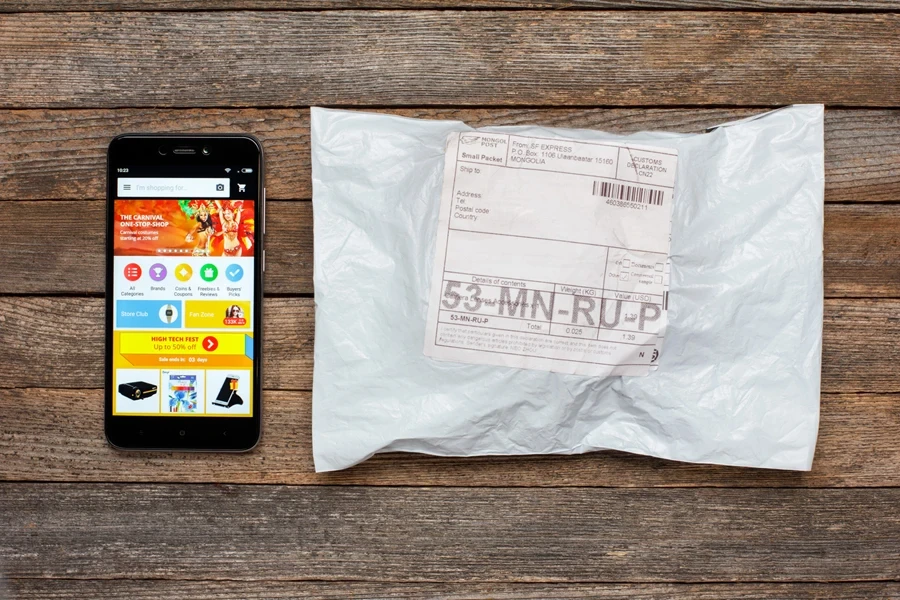If you’re familiar with Amazon or eBay, you probably already know these platforms cater to end consumers. Alibaba.com, on the other hand, focuses on connecting buyers (often businesses, but not necessarily) with wholesalers, manufacturers, and trading companies. In simpler words, think of it as a massive marketplace of suppliers (many located in China) open to producing, customizing, and shipping products in bulk.
Why would this matter for making money? Because if you can source items at a lower cost, you have the flexibility to sell them at a higher price elsewhere, whether that’s your online store, Amazon, a local boutique, or even at weekend flea markets. The key is recognizing that Alibaba.com is your backstage pass to the entire production pipeline.
Instead of buying from a U.S. or European middleman, you’re talking directly to the manufacturer—or at least a trading company close to that manufacturer—and can often cut down on extra markups. Here’s how buyers can make money with Alibaba.com.
Table of Contents
9 Steps to follow to make money with Alibaba.com as a buyer in 2025
Step 1: Figure out what you want to sell (and to whom)
Step 2: Create a solid Alibaba.com account and explore
Step 3: Connect with potential suppliers
Step 4: Validate quality (Never skip this!)
Step 5: Negotiate like a pro
Step 6: Private labeling and branding for higher profits
Step 7: Figure out shipping and logistics
Step 8: Decide where you’ll sell
Step 9: Market the heck out of your product
4 additional ways to make money with Alibaba.com
1. Dropshipping
2. Licensing and distribution
3. Alibaba.com’s affiliate marketing program
4. Manufacturing
Bringing it all together
FAQs
9 Steps to follow to make money with Alibaba.com as a buyer in 2025
Step 1: Figure out what you want to sell (and to whom)

Before you even type the first search term into Alibaba.com’s search box, it helps to know what niche or category you plan on tackling. You might choose something close to your heart (like fitness gear or kitchen gadgets) or pick something purely based on market research. Either way, decide on a direction first.
Note: Some basic market research on platforms like Amazon or eBay can help you see what products are trending and in high demand.
Step 2: Create a solid Alibaba.com account and explore

Signing up on Alibaba.com is relatively straightforward. Once you’re in, you’ll see a huge search bar. Type in your product idea, such as “yoga mats” or “LED string lights.” You’ll be presented with thousands of options from different suppliers, each listing different prices, minimum order quantities, shipping options, etc. Here are some things to keep in mind while exploring:
- Keep an eye out for Trade Assurance suppliers, which means Alibaba.com protects buyers in case of a dispute.
- Also, consider working with suppliers with the “Alibaba Guaranteed” tag. That way, getting refunds and compensation will be quick and easy if something happens with the order (like failure to arrive or late shipment)
- Look for signs that the supplier is verified or has positive feedback. Skimming through those indicators will give you an initial sense of who’s potentially reliable.
Step 3: Connect with potential suppliers

Once you find some suppliers offering interesting items at competitive prices, it’s time to reach out. Often, you’ll do this through Alibaba.com’s internal messaging system, which is similar to email but keeps everything recorded in one spot. As a buyer on Alibaba.com, you should start by introducing yourself politely—yes, it’s business, but being courteous can go a long way.
You can send a message like:
“Hi, I run a small e-commerce store focusing on pet supplies, and I’m interested in your collapsible dog bowls. Could you tell me more about your minimum order quantity and pricing for 200 units? Also, do you offer custom branding or packaging options?”
Always keep it short, sweet, and clear. You want to determine their minimum order quantity (MOQ), pricing tiers, and whether they can customize your product. Suppliers might respond immediately or take a day or two, depending on time zone differences and their busy schedules.
Step 4: Validate quality (Never skip this!)
You never really know what you’re getting until you have a sample in your hand. For this reason, requesting a sample is a non-negotiable step for buyers looking to make money with Alibaba.com. If a supplier is reluctant to send a sample or tries to dodge direct questions about quality, consider that a red flag.
Yes, samples might cost a bit more (sometimes you even pay for shipping), but it’s far better to spend a little extra upfront than to order a hundred or a thousand units only to find they’re poorly made. If the samples pass your inspection, you can move forward more confidently.
Step 5: Negotiate like a pro

Remember, you’re dealing with manufacturers who are used to bulk orders and negotiations. So, nothing is truly set in stone. If you see a price that’s a bit above your target cost, respectfully ask if there’s room for a discount, especially if you plan on ordering consistently in the future or can place a larger order. That said, be mindful of being overly aggressive in negotiations.
Trust is a big factor, and if a supplier feels you’re undercutting them to the point that they won’t make a profit, the relationship might go sour. A good strategy is clearly explaining your goals like this, for example: “I’m hoping to expand my store offerings this year. If this initial order works well, I plan to order 1,000 units next quarter.”
Setting such expectations can help suppliers see that working with you might be mutually beneficial in the long run. Want to dive deeper? Check out our full guide on negotiating the best prices with suppliers on Alibaba.com.
Step 6: Private labeling and branding for higher profits

One of the best ways to stand out in a market full of generic items is to develop your brand. This doesn’t mean you have to reinvent the product from scratch. Even something as simple as adding a custom logo and distinctive packaging can boost your perceived value.
Let’s say you’re selling reusable water bottles. If you order a generic batch and they arrive in plain plastic bags, you could still sell them, but they’ll likely be lost in a sea of other plain-looking bottles. However, if you arrange with your supplier to laser-engrave your logo on each bottle and package them in a sturdy, eco-friendly box, you immediately appear more professional.
You can highlight these brand elements in your marketing: “Check out our sleek, engraved EcoSip bottles, packaged sustainably for minimal waste!” That approach often justifies a higher price or consumers buying from you instead of the competition.
Step 7: Figure out shipping and logistics
When you’re ready to start shipping your goods, you’ll encounter acronyms like FOB, CIF, EXW, etc. These might sound intimidating, but they’re standard international shipping terms that clarify who pays for what.
For smaller orders, many suppliers handle the shipping via DHL, FedEx, or UPS right to your doorstep—or Amazon’s warehouses if you’re using FBA.
For larger orders, sea freight is typically cheaper, but it’s also a lot slower. You could wait a few weeks or more and have to handle customs paperwork. If the complexities of freight shipping seem overwhelming, you can look into freight forwarders. A decent freight forwarder will handle everything from picking up the goods from the factory to delivering them to your chosen location while ensuring proper customs clearance.
Step 8: Decide where you’ll sell

This is where your creativity can shine. Some buyers prefer Amazon FBA (Fulfillment by Amazon), where they ship their inventory to Amazon, list it on their marketplace, and let Amazon handle the logistics.
The upside is that Amazon has an enormous customer base and robust shipping networks. But the downside is the fees can stack up, and you’re competing in a big pond, so you need to optimize your listings and possibly invest in ads.
Other business buyers prefer Shopify or WooCommerce because it gives them full control of branding and customer relationships. If you go this route, you’ll have to handle your marketing, shipping, and customer service (unless you outsource those tasks). The disadvantage is that you don’t get the instant audience Amazon provides while you have complete control.
Many buyers also do well selling on eBay, Etsy, or even at local events. There’s no single correct path; it’s about finding the platform that fits your style, resources, and product category.
Step 9: Market the heck out of your product
Even if you have the greatest product and you’ve managed to source it cheaply, the money won’t come in unless you market effectively. On platforms like Amazon, that usually means optimizing your product listing with the right keywords, high-resolution images, and compelling bullet points that highlight the benefits of your product. You might also invest in Amazon PPC ads to gain initial traction.
If you’re selling through your online store, consider using social media (Instagram, TikTok, Facebook, or YouTube) to showcase your product. Show real people using it, give behind-the-scenes peeks at your packaging process, or share tips on how to get the most out of the item. Authenticity often wins over slick but generic ads.
Note: Don’t worry if you’re uncomfortable on camera. You can partner with micro-influencers who genuinely connect with your target audience.
4 additional ways to make money with Alibaba.com

Signing up on Alibaba.com and buying in bulk to resell is just the beginning of what you can do with the platform. Here are other ways to make money with Alibaba.com:
1. Dropshipping
Dropshipping is among the most popular ways to make good money on Alibaba.com. The platform now makes it even easier by helping you connect with trustworthy suppliers open to dropshipping deals, allowing you to grow your business and reach more customers. When a customer orders, you simply pass the details to the suppliers, who’ll handle the shipping straight to the buyer.
Note: Alternatively, you can integrate your e-commerce store (Shopify, WooCommerce, etc.) with Alibaba.com to get product descriptions quickly and keep them updated, which gives you better opportunities to grow your store.
2. Licensing and distribution
This approach works well if you already have a strong brand or a product that’s doing well and wants to reach more people. Alibaba.com can help promote and license your brand online to potential partners and customers. Once you get your brand licensed through Alibaba.com, it becomes much easier to access their huge network, connect with more buyers, and increase your profits.
3. Alibaba.com’s affiliate marketing program
Don’t have products to sell or order in bulk on Alibaba.com? No problem—you can still make money with the platform by joining the Alibaba Affiliate Network (AAN). Here, you can use your skills and online presence to refer people and earn a commission from them (a.k.a. your referral link).
Note: The Alibaba.com affiliate program is great if you have a strong online following. You can share product links on your website, blog, or social media.
4. Manufacturing
Do you have a unique product idea that will fill a market gap? You’ll need someone to make it, and Alibaba.com is a great place to start. Through its OEM (Original Equipment Manufacturer) program, you can connect with suppliers who can help make custom products with your unique branding.
After making the product, you can sell it as your own and earn more from each sale. Building this kind of partnership makes it easier to grow your brand (online and physical stores) and boost profits with a unique product idea.
Note: One of the best ways to stand out in a market full of generic items is to develop your brand. This doesn’t mean you have to reinvent the product from scratch. Even something as simple as adding a custom logo and distinctive packaging can boost your perceived value.
Bringing it all together
The beauty of working with Alibaba.com is that once you’ve built a solid relationship with one supplier or more, they can introduce you to other items or even new, specialized factories. Hence, it’s best to keep those relationships friendly—congratulate them on holidays, pay invoices on time, and communicate clearly.
The better your relationship with Alibaba.com suppliers, the higher the chances your products will make more money. Avoid skipping the sample phase when working with new manufacturers, check skipping costs, and abide by local regulations, and you’ll be fine.
FAQs
1. Can you actually make money from Alibaba.com?
Yes, one of the simplest ways to make money in eCommerce is by reselling Alibaba.com products on platforms like Amazon or Etsy—and you don’t even need an LLC to get started. The best part is that you can sell products from other brands or work with suppliers through Alibaba’s OEM or ODM services to create products under your brand name.
2. Is it worth selling on Alibaba.com?
Selling on Alibaba.com can be worth it, especially if you want to expand internationally. However, it required careful planning and understanding of what to avoid when navigating the platform.
3. What are Alibaba.com’s most profitable items?
The best items to resell depend on who you’re selling to and your niche. That said, some top-selling and most profitable products include electronics, clothing, home items, beauty and skincare products, pet supplies, toys, sports gear, and jewelry—they are always in demand.
4. Is it profitable to buy products on Alibaba.com in bulk and sell them?
Buying in bulk is a great way to get deals and cheaper prices. You can profit more when reselling the items at a markup on Amazon or Etsy.
5. How to make money through Alibaba.com or Amazon
A good place to start is dropshipping. You can find trending products on Alibaba.com and list them on your preferred platform without ordering upfront.



